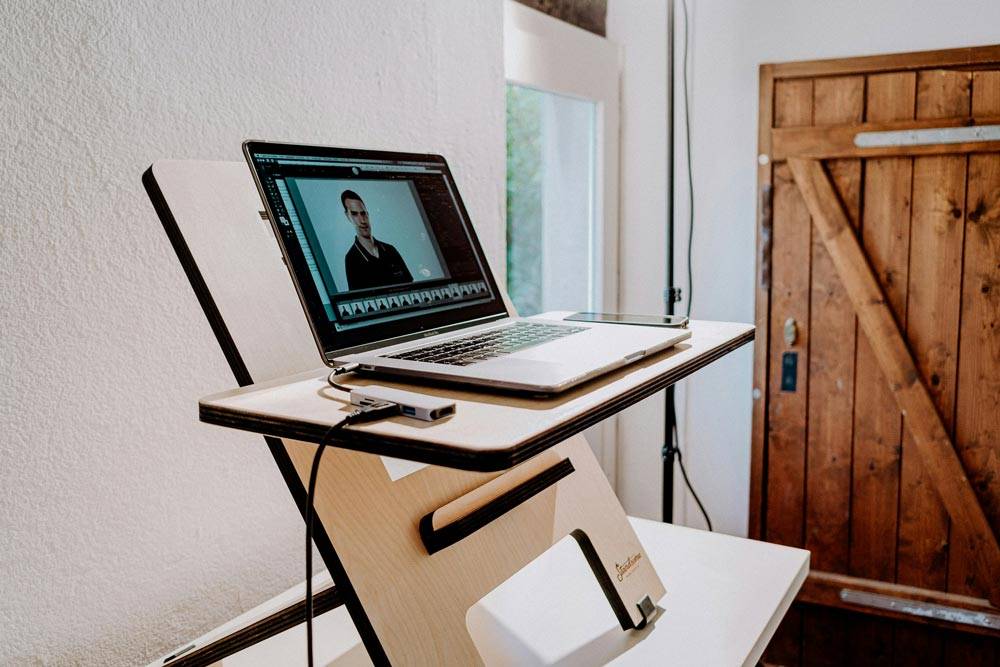It is important to prioritize the health of your spine if you work at a job that involves hours of sitting each day. Supporting your spine while you are seated can take a load off your neck, back, shoulders, and other joints. One way to a happy and healthy spine is to create an ergonomic workstation.
Ergonomics is more than just a buzz-word, ergonomics is the science of how a person interacts with their environment. This applies to an employee within the office, or a student at their desk. Adopting ergonomic techniques can improve the workstation environment and help prevent injuries. The goal of an ergonomic workstation is to reduce stress and eliminate injuries and disorders associated with the overuse of muscles, bad posture, and repeated tasks.
The Bureau of Labor Statistics of the Department of Labor defines musculoskeletal disorders as musculoskeletal system and connective tissue diseases and disorders when the event or exposure leading to the case is bodily reaction (e.g., bending, climbing, crawling, reaching, twisting), overexertion, or repetitive motion.
In an office setting, Carpal Tunnel Syndrome is the most common musculoskeletal disorder along with back, neck, and shoulder aches and pains. Musculoskeletal disorders usually develop gradually over time. Musculoskeletal injuries may reduce physical and mental stress with a proper ergonomic workstation set-up.
Physical Therapists and Physical Therapist Assistants are experts in musculoskeletal disorders and human movement. Your therapy team can help by promoting the concept of musculoskeletal health, aid you in avoiding injuries on the job, and understand risk factors for musculoskeletal disorders.
- Posture
- Keep elbows close to your sides – adjust armrests so that the weight of the forearms rest on the arms rests. Avoid hunching the shoulders forward.
2. Check Eye Level
- Align the top of the monitor screen with the computer user’s forehead.
- Ensure monitor is placed 20-40 inches (about arm’s length) away from the eyes. Monitor distance should be about 20 inches when using a small screen or a laptop screen and further away as the screen size gets larger.
- Dual monitors should be located close together at the same height and distance so that the eyes do not have to re-focus and the head does not turn significantly when looking between the monitors.
3. Work Surface
- Position frequently used materials and equipment close to the front of the body to avoid twisting and reaching.
4. Chair
- Adjust your chair or seat height so your thighs are parallel to the floor with feet resting flat. The bottom of the seat should not compress the back of the thighs.

5. Foot Rest
- If your feet can’t sit flat on the floor with legs and hips at a 90-100 degree angle, then use an adjustable foot rest.
6. Keyboard and Mouse
- Ensure that the ASDF row of the keyboard is at the elbow height for a sitting or standing ergonomic workstation.
7. Telephone
- Use a hands-free headset when able to avoid balancing the phone between head and shoulder.
8. Avoid Eye Strain: Use to 20/20/20 Rule
- For every 20 minutes spent looking at a computer screen, you should spend 20 seconds looking at something else 20 feet away. This gives your eye muscles a break and helps reduce eye strain.
9. Make Sure There Is Enough Light
- Natural light is best. Set up your workspace near a window, but make sure to position your desk in a way that decreases glare from the computer screen. This will reduce eyestrain and fatigue.
10. Take Breaks
- Take a break from your seated position every 30 minutes spent working; Stand and walk around for 2 minutes.
In the event of an injury or development of hand/wrist, back, neck, and shoulder aches and pains, schedule an appointment with a Physical Therapist. Call Rehab Solutions at (307) 686-8177
Author: Devery Huddleston, PT, DPT

Sources:
- Work-Related Musculoskeletal Disorders & Ergonomics. Centers for Disease Control and Prevention. https://www.cdc.gov/workplacehealthpromotion/health-strategies/musculoskeletal-disorders/index.html
- Office Ergonomics. HealthLinkBC. https://www.healthlinkbc.ca/health-topics/tr5915#:~:text=Ergonomics%20may%20prevent%20musculoskeletal%20injuries,reduce%20your%20chances%20of%20injuries.
- Desktop Ergonomics. National Jewish Health. https://www.nationaljewish.org/conditions/health-information/health-tips/desktop-ergonomics
- Ergonomics Recommendation For Remote Work. Peoplespace. https://peoplespace.com/buzz/ergonomics-recommendations-for-remote-work
- Prepare an Ergonomic Home School Space for Your Child This Fall. Anne Arundel Medical Group. https://aamgphysicaltherapy.com/physical-therapy/prepare-an-ergonomic-home-school-space-for-your-child-this-fall/
- Physical therapists and physical therapist assistants are experts in human movement, who can help workers by promoting the general concept of musculoskeletal health. APTA. 2021;(10):18,19.

